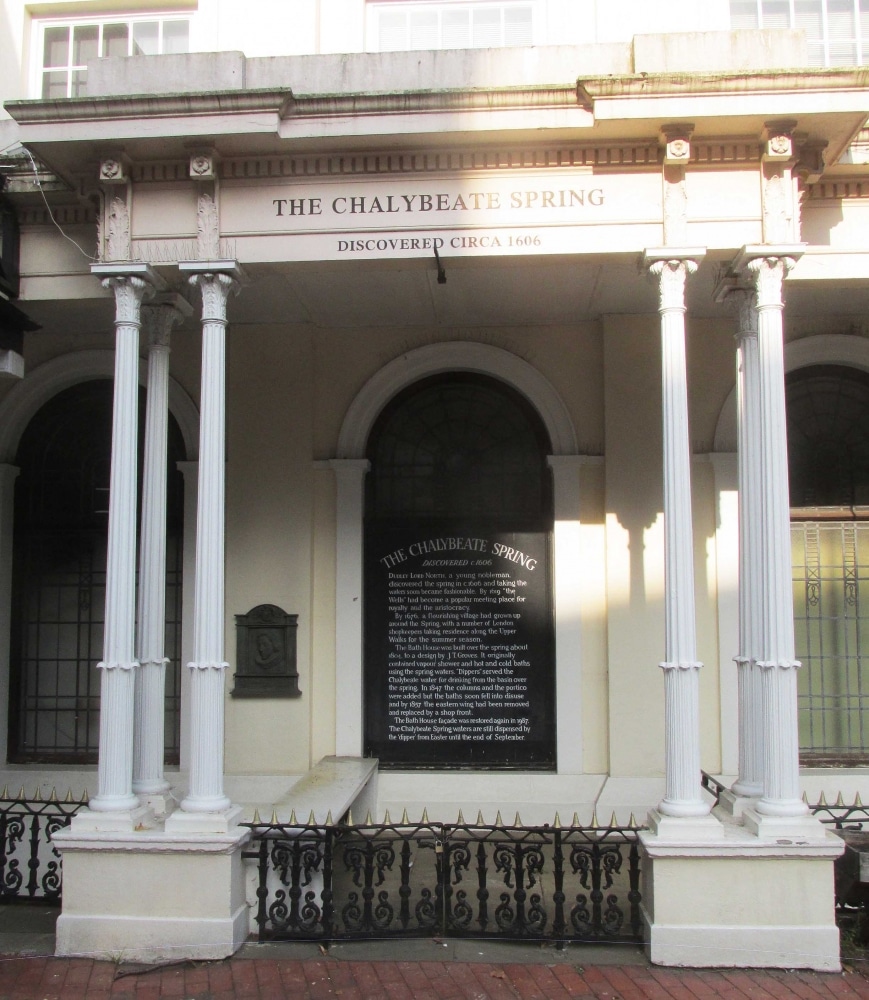Water in the Wells, which is part of the Town Forum, made their plea to ‘exploit’ the town’s historic connection with the spring after an attempt to rejuvenate the well in The Pantiles appears to have dried up.
The Chalybeate Spring was first discovered in 1606 and became a tourist attraction, resulting in the town forming around the site of its discovery.
The only presence of the spring remaining is in a corner of The Pantiles where there is a plaque and a well leading to the water. The site is surrounded by railings.
During the summer the Council employs ‘dippers’ to offer the water to visitors, but this is not enough, say Water in the Wells.
“I think it is really irresponsible of the Council that they won’t exploit the spring to its maximum potential,” said Water in the Wells Chairman Michael Holman.
“I would so love to see it made the most out of. It is the reason the town is here and needs to be renovated and tidied up. Currently the area around the spring is not fit for purpose.”
In May last year, Tunbridge Wells businessman Samuel Danby made waves by placing an A-board next to the spring announcing that he intended to ‘create a mini tourism hub – a visitor centre open 7 days a week’.
His proposal would serve ‘the famous spring water all year round with monthly walking guides’.
Mr Danby , who runs events company Bertie & Boo that puts on children’s parties, launched a Just Giving campaign aiming to raise £125,000 for the revamp of the Chalybeate Spring, quoting support from members of Water in the Wells.
“The first I heard of it was when I saw the A-board,” said Mr Holman. “Despite the fact I was quoted on it, I knew nothing about his plans.
“He was incredibly hard to get hold of, but eventually I did sit down with him and heard his ideas, but afterwards I told him that these had all been tried before and were unworkable.”
Mr Danby’s attempts to fund a project to restore the spring appear to have failed.
The online fundraiser he set up received just £1,895 of the £125,000 requested in donations and has been closed.
It is not known what has happened to the money that has already been donated.
When approached by the Times, Mr Danby would only say the project was still ‘at the planning stages at present’.
“It would be great if a business could come along and restore the spring,” said Mr Holman from Water in the Wells.
“The situation at the moment is that owners of The Pantiles, Targetfollow, lease it to the Council, who I’m sure would love a business with a workable plan to take it off their hands. But I don’t think it will be Mr Danby.
“I would, however, love to see it exploited and made the most of.”
A spokesperson for Tunbridge Wells Borough Council said: “We look after the enclosed area around the spring and we ensure this is cleaned regularly.
“Even before Covid restrictions were introduced it was proving very difficult to find the right people to take on the temporary role of dipper. However, we are hoping to have a dipper in costume at the spring during September.
“We are aware that Targetfollow has been approached about the future use of the spring and we are in discussions with them about this.”
Waters that put a spring in a nobleman’s step
The Chalybeate Spring was discovered by young nobleman Dudley Lord North – 3rd Baron North – in 1606.
Lord North had spent several days at the nearby Abergavenny Estate and was feeling the worse for wear from heavy drinking. He took a sip of the water he saw foaming on the ground in an area on the estate between Eridge and the nearby town of Tonbridge.
After feeling rejuvenated, he declared it to be health-giving and told all his friends and acquaintances.
The spring soon began attracting visitors, and the town of Tunbridge Wells began to form around the site.
For more than 400 years visitors came to the town to ‘take the waters’.
The small town of Tunbridge Wells (eventually becoming Royal Tunbridge Wells) surrounding the waters soon grew to rival the size of the already established Tunbridge (later renamed by the GPO as Tonbridge).
In 2015 the waters stopped flowing altogether for the first time in 400 years when the spring temporarily ran dry.








